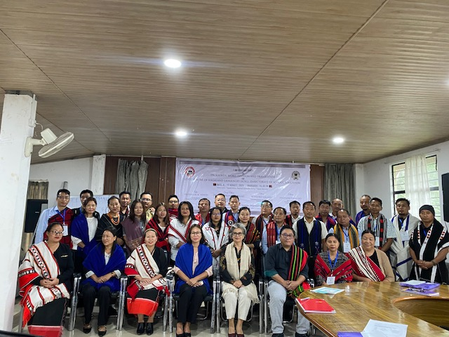
Kohima, Sep 1 (IANS) The Nagaland University, the only central varsity in the state, is partnering with the state government’s Directorate of School Education, to spearhead a landmark initiative to develop written grammar for the 18 recognised languages of the Northeastern state, officials said on Monday.
The official said that the project seeks to provide structured pedagogical grammars for inclusion in school textbooks from Class 5 to Class 12, ensuring alignment with the National Education Policy (NEP) 2020.
According to the official, while Naga languages have been taught in schools for decades, none have had dedicated written grammars for the teaching-learning process.
This initiative addresses the gap by systematically documenting grammar, including parts of speech, tense and aspect, phrase and clause structures, and tone, while enriching vocabulary and clarifying orthography where needed.
This long-term effort not only strengthens NEP 2020’s vision of multilingual education but also addresses the risks of language marginalisation by ensuring each Naga language is valued as much as dominant languages, the official pointed out.
He said that the grammar developed under this initiative would be incorporated into school textbooks alongside prose, poetry, and translation, under the supervision of State Council of Educational Research and Training (SCERT) and Nagaland Board of School Education (NBSE).
Teacher training programmes are planned to support the smooth integration of grammar teaching in classrooms, beginning with refresher courses hosted by Nagaland University.
The project is led by Dr. Mimi Kevichusa Ezung, Associate Professor and Head, Department of Tenyidie, Nagaland University. Tenyidie is the standardised form of the Angami language spoken by the Angami community of Nagaland as well as the speech community of nine other tribes, which collectively fall under the Tenyimia group.
Reiterating the commitment of the university to the development of the local community, Prof. Jagadish K Patnaik, Vice-Chancellor, Nagaland University, said, “It gives me great pleasure to announce that the Department of Tenyidie, Nagaland University, has taken the lead in a historic initiative to develop grammar resources for the 18 State-recognised languages of Nagaland for inclusion in school textbooks.”
“This endeavour is not merely an academic exercise but a cultural mission – one that seeks to preserve, strengthen, and promote the linguistic heritage of our people,” he said in a statement.
Prof. Patnaik added, “This initiative would not have been possible without the dedication of our faculty, scholars, language experts and community elders who have worked together in a spirit of collaboration. It is also a step towards fulfilling the vision of the National Education Policy 2020, which emphasises education in the mother tongue, and the preservation of India’s rich linguistic diversity.”
Highlighting the cultural significance of the project, Dr. Mimi Kevichusa Ezung, Associate Professor and Head, Department of Tenyidie, Nagaland University, said, “The two main components of language are vocabulary and grammar. A written grammar is a formal representation of the abstract properties of a language.”
Ezung, according to the statement, said that at a time when Naga languages are undergoing standardisation, developing pedagogical grammars is crucial.
“It ensures consistency and regularity in writing and in speech, while instilling pride in one’s mother tongue. This initiative is not just about textbooks but it is also about preserving identity, culture, and indigenous knowledge,” she said.
The project is collaborative in nature, involving multiple stakeholders, which included Language Literature Boards, State Centre of Naga Languages (SCNL), SCERT and NBSE.
The Language Literature Boards would help in the selection of a language variety to be standardised, coin new words, and oversee textbooks for Classes 9 – 12. The SCNL, under the Directorate of School Education, developed textbooks for Classes 1–8 and works closely with Literature Boards for translation, proofreading, and final approval.
The SCERT, NBSE integrated grammar into the official curriculum. Technical workshops, held at Nagaland University’s Department of Tenyidie, are equipping language officers under the SCNL with the tools to translate and document grammatical categories into their respective languages, the statement said.
The 18 languages covered under this programme include Ao, Chang, Chokri, Khiamniungan, Konyak, Kuki, Kuzhale (Khezha), Liangmai, Lotha, Nthenyi (Southern Rengma), Nzonkhwe (Northern Rengma), Phom, Pochury, Sangtam, Sümi, Tenyidie (Angami), Yimkhiung, and Zeme. Currently, only a few languages, such as Tenyidie, Ao, Lotha, and Sümi, are taught beyond Class 8, with Tenyidie being offered up to M.A. and Ph.D. level.
This grammar-writing initiative would lay the foundation for expanding other languages to higher levels of education, the statement added.
–IANS
sc/rad



